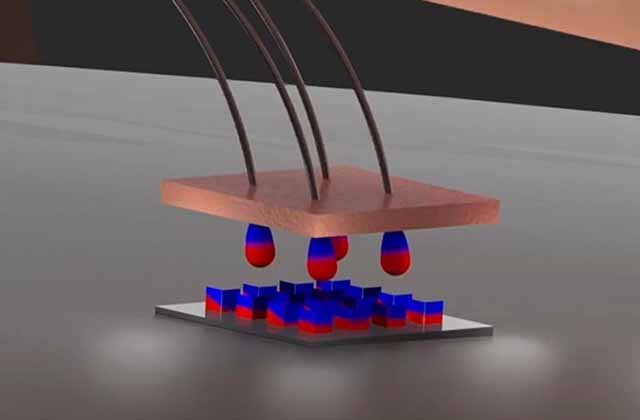Researchers have created an artificial skin that differs in the direction of touch
 A research team led by Prof. Dr. Oliver G. Schmidt, head of the Professorship of Material Systems for Nanoelectronics as well as Scientific Director of the Research Center for Materials, Architectures and Integration of Nanomembranes (MAIN) at Chemnitz University of Technology, has explored a new avenue to develop extremely sensitive and direction-dependent 3D magnetic field sensors that can be integrated into an e-skin system (active matrix). The team used a completely new approach for miniaturization and integration of 3D device arrays and made a major step towards mimicking the natural touch of human skin. The core of the sensor system presented by the research team is a so-called anisotropic magnetoresistance (AMR) sensor. An AMR sensor can be used to precisely determine changes in magnetic fields. AMR sensors are currently used, for example, as speed sensors in cars or to determine the position and angle of moving components in a variety of machines.
A research team led by Prof. Dr. Oliver G. Schmidt, head of the Professorship of Material Systems for Nanoelectronics as well as Scientific Director of the Research Center for Materials, Architectures and Integration of Nanomembranes (MAIN) at Chemnitz University of Technology, has explored a new avenue to develop extremely sensitive and direction-dependent 3D magnetic field sensors that can be integrated into an e-skin system (active matrix). The team used a completely new approach for miniaturization and integration of 3D device arrays and made a major step towards mimicking the natural touch of human skin. The core of the sensor system presented by the research team is a so-called anisotropic magnetoresistance (AMR) sensor. An AMR sensor can be used to precisely determine changes in magnetic fields. AMR sensors are currently used, for example, as speed sensors in cars or to determine the position and angle of moving components in a variety of machines.
To develop the highly compact sensor system, the researchers took advantage of the so-called "micro-origami process." This process is used to fold AMR sensor components into three-dimensional architectures that can resolve the magnetic vector field in three dimensions. Micro-origami allows a large number of microelectronic components to fit into small space and arrange them in a geometry that is not achievable by any conventional microfabrication technologies. "Micro-origami processes were developed more than 20 years ago, and it is wonderful to see how the full potential of this elegant technology can now be exploited for novel microelectronic applications," says Prof. Oliver G. Schmidt.
The research team integrated the 3D micro-origami magnetic sensor array into a single active matrix, where each individual sensor can be conveniently addressed and read-out by microelectronic circuitry. "The combination of active-matrix magnetic sensors with self-assembling micro-origami architectures is a completely new approach to miniaturize and integrate high-resolution 3D sensing systems," says Dr. Daniil Karnaushenko, who contributed decisively towards the concept, design and implementation of the project.
The research team has succeeded in integrating the 3D magnetic field sensors with magnetically rooted fine hairs into an artificial e-skin. The e-skin is made of an elastomeric material into which the electronics and sensors are embedded -- similar to organic skin, which is interlaced with nerves.
When the hair is touched and bends, the movement and exact position of the magnetic root can be detected by the underlying 3D magnetic sensors. The sensor matrix is therefore not only able to register the bare movement of the hair, but also determines the exact direction of the movement. As with real human skin, each hair on an e-skin becomes a full sensor unit that can perceive and detect changes in the vicinity. The magneto-mechanical coupling between 3D magnetic sensor and magnetic hair root in real-time provides a new type of touch-sensitive perception by an e-skin system. This capability is of great importance when humans and robots work closely together.